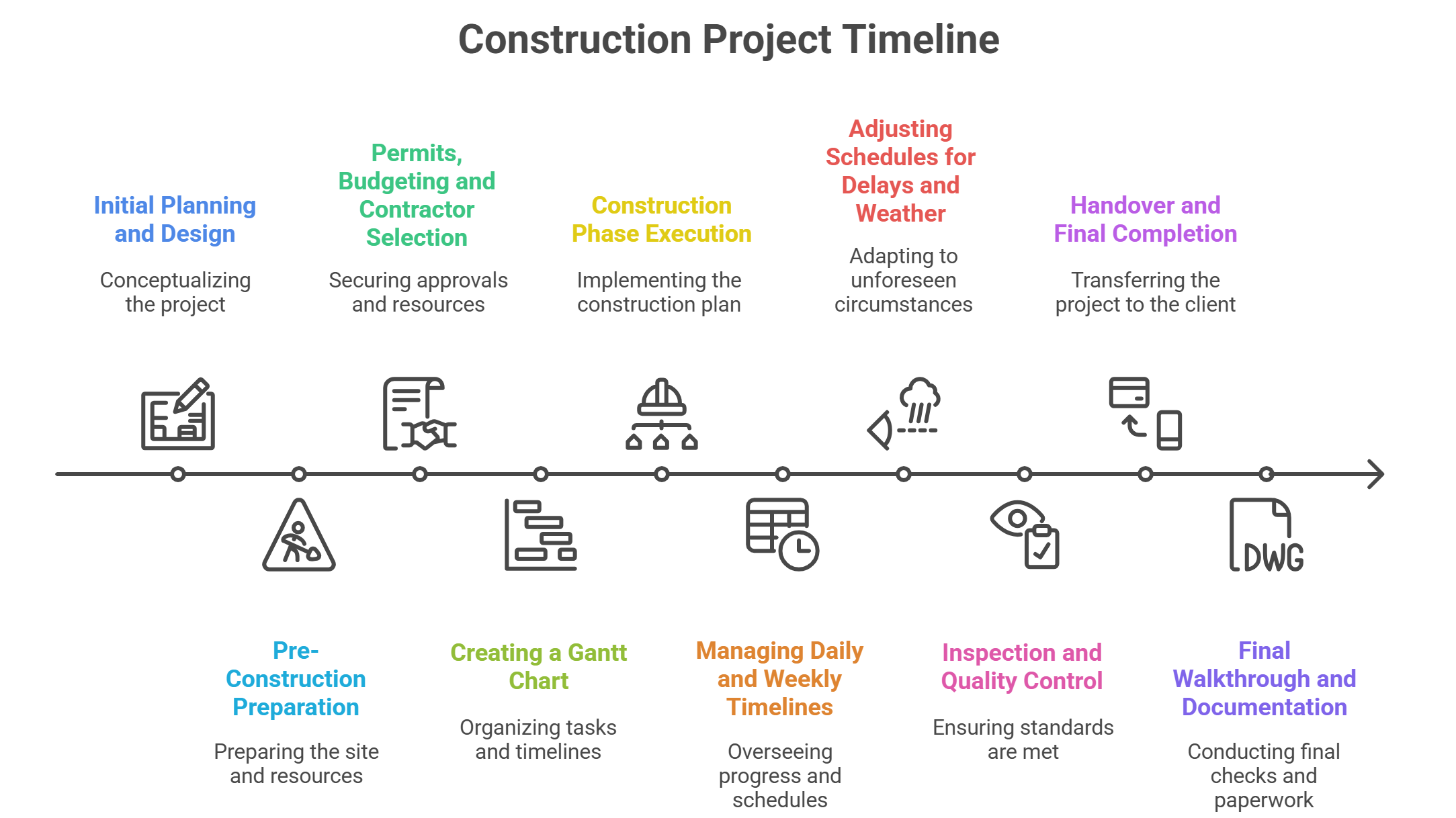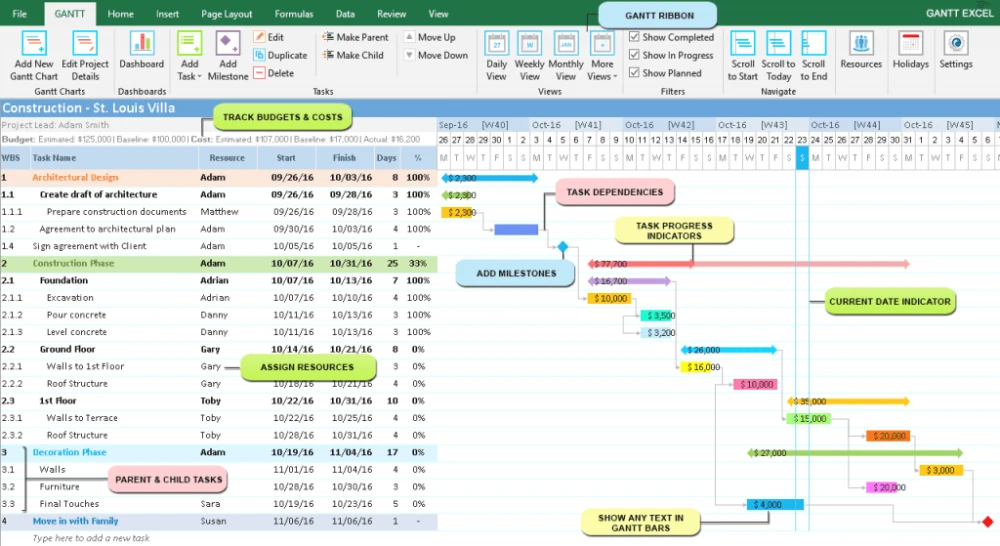Planning, design, procurement, execution, and handover form the key chronological phases that shape every build’s success. A defined timeline for construction project aligns these stages for smooth progress. Research from PwC reveals that projects with structured timelines achieve 20–30% higher delivery efficiency.

Initial Planning and Design Phase
Architects and engineers draft conceptual sketches then detailed technical drawings, locking in scope, materials, and realistic durations for the timeline for construction project. These blueprints guide every downstream decision. Client objectives merge with site surveys and council codes to shape a viable construction timeline.How To Make A Construction Project Schedule? A Complete Guide
Early alignment prevents rework; for instance, soil tests often reveal foundation needs that adjust the overall building timeline.
Critical planning outputs include:
- Design brief outlining vision and constraints
- Site survey detailing topography and services
- Feasibility report estimating costs and risks
Pre-Construction Preparation
This bridge phase turns designs into actionable plans by securing permits, finalising budgets, and tendering works, directly feeding the timeline for construction project. Australian builders rely on precise cost models and scheduling software to avoid surprises. The pre-construction process ensures smooth transitions.
Permits, Budgeting and Contractor Selection
Local councils grant planning permits after thorough reviews, while budget breakdowns tie funds to milestones for timeline accuracy. Missteps here inflate costs fast. Contractors are chosen based on track records, licensing, insurance, and subcontractor networks. Delays in approvals cause 18% average project timeline extension, per industry reports; tight coordination keeps the construction project timeline on track.
Creating a Gantt Chart for Tracking Progress
Gantt charts map task sequences, dependencies, and durations visually, making the timeline for construction project easy to follow. Digital tools in Construction Project Management sync teams instantly.
Key elements to plot:
- Design milestones like DA approval
- Construction phases from slab to roof
- Inspection checkpoints for compliance
Construction Phase Execution
Site mobilisation kicks off with clearing, temporary services, then groundwork, framing, and finishes, all paced by daily and weekly targets in the timeline for home construction. Sequencing matters immensely. Effective ordering of trades boosts productivity by 30%, according to Master Builders Australia data. A house building timeline might allocate eight weeks to framing alone, depending on design complexity.
Managing Daily and Weekly Timelines
Supervisors log progress, material arrivals, and crew shifts using real-time updates to protect the construction timeline. Small slips compound quickly without vigilance. Monitoring tools include:
- Digital dashboards for live status
- Supervisor reports on variances
- Mobile apps for instant adjustments
Adjusting Schedules for Delays and Weather
Contingency buffers absorb rain interruptions or supplier lags; in Sydney, wet seasons demand flexible forecasting to safeguard the timeline for construction project. Open client updates maintain confidence.
Inspection and Quality Control
Scheduled checks verify workmanship against Australian Standards like AS 2870 for foundations. Benchmarks cover concrete psi ratings, membrane integrity, and electrical safety, woven into the timeline for construction.
| Inspection Type | Frequency | Responsible Party |
|---|---|---|
| Structural | At key stages | Certifying engineer |
| Waterproofing | Post-application | Site foreman |
| Final practical | Pre-handover | Building surveyor |
Handover and Final Completion
Punch lists resolve defects, certificates issue, and occupancy permits release, closing the timeline for construction project. Thorough records support ongoing care. Client feedback surveys plus warranty packs cement accountability. Timely completion reflects professional delivery every time.
Final Walkthrough and Documentation
Builders and owners inspect every element, hand over manuals, and confirm fixes before final payment. Clear defect logs prevent disputes down the line.
Sample Construction Project Timeline Chart
Project managers plot phases end-to-end in a Gantt chart, revealing overlaps and critical paths for the timeline for construction project. This sample suits a standard 200 m² home build.
| Phase | Duration (weeks) | Key Deliverables |
|---|---|---|
| Planning & Design | 6–10 | Approved drawings, permits |
| Pre-construction | 4–6 | Contracts, final budget |
| Site works & foundation | 4–8 | Slab poured, services connected |
| Frame & roof | 6–8 | Weather-tight structure |
| Lock-up & internals | 8–12 | Plaster, fittings, painting |
| Handover | 2–4 | Occupancy certificate, manuals |
Why Accurate Timelines Save Money and Trust?
Tight scheduling minimises idle crews and material holding costs; McKinsey data shows efficient planning can cut project delays by 20%. Every week saved flows straight to the bottom line. On-time delivery builds client loyalty and referral networks. Forward-thinking builders who master the timeline for construction project position themselves for sustainable, repeat success in a competitive market.


